We put the Samsung Galaxy A54 5G through our rigorous DXOMARK Audio test suite to measure its performance both at recording sound using its built-in microphones, and at playing audio back through its speakers.
In this review, we will break down how it fared in a variety of tests and several common use cases.
Overview
Key audio specifications include:
- Two speakers (Top front, bottom side)
- No jack audio output
Scoring
Sub-scores and attributes included in the calculations of the global score.
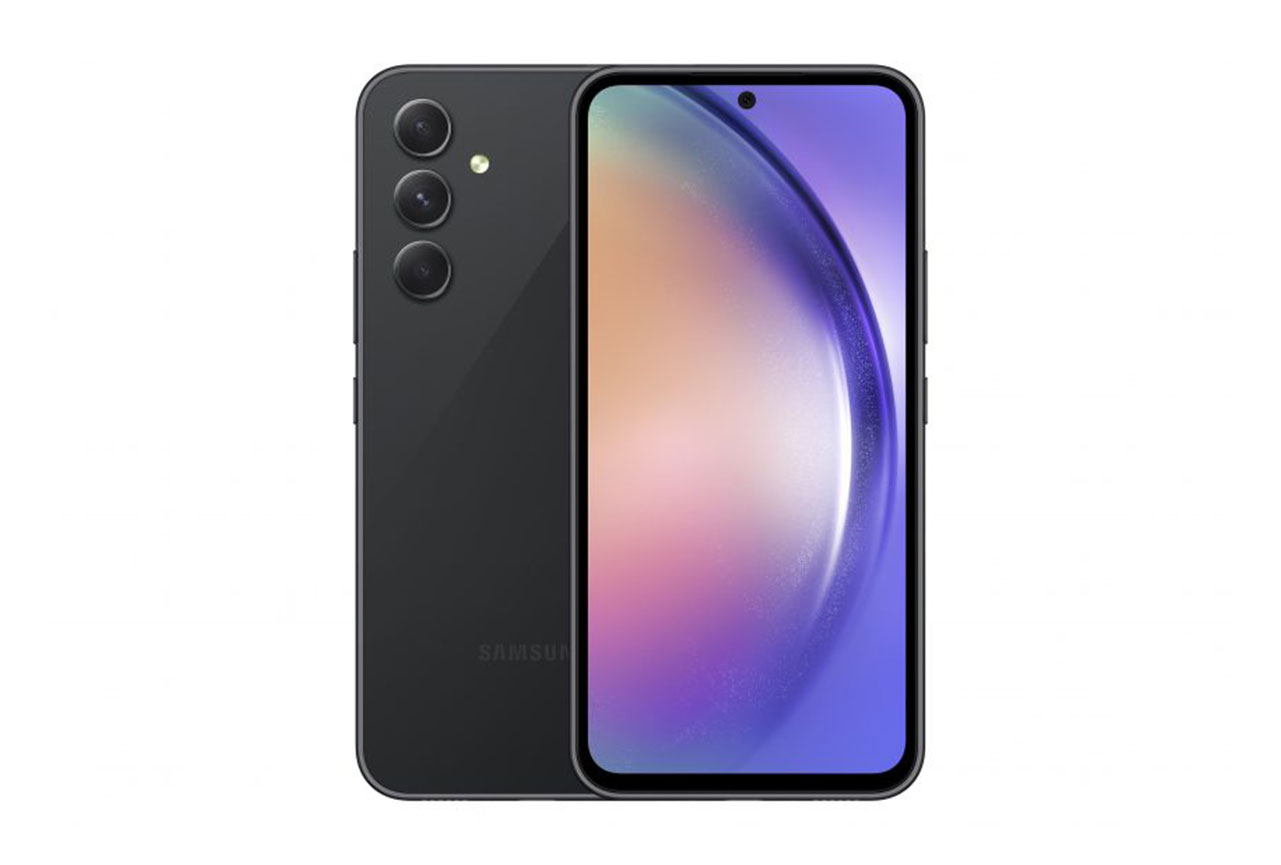
Samsung Galaxy A54 5G


 54th
54th 5th
5thPlayback
Cons
- Performance too volume-dependent
- Tinny resonance and harshness
- Underwhelming depth rendition
Recording
Pros
- Good performance overall in all use cases and attributes
- Pleasant tonal balance, consistent across all use cases
- Pretty much free of artifacts
Cons
- No audio zoom
- Sub-bass too intrusive at high sound pressure levels, as well as in the background of urban scenarios
- Poor signal-to-noise ratio in loud environments, main signal can get drowned out
With an overall score of 133, the Samsung Galaxy A54 5G did well in our DXOMARK Audio tests for a device in its class, but left some room for improvement. Overall audio quality has improved over its predecessors in the A-series, with consistent performance across use cases in both playback and recording. Playback through the built-in speakers sounded punchy with nice bass, but it could become a little harsh at high volume settings. A54 audio recordings offered a pleasant tonal balance and were almost free of unwanted artifacts. However, wind or loud background noises could have a detrimental effect on recording quality, reducing intelligibility quite noticeably. Overall recording results were best with the main camera, but performances with the front camera and memo app were decent as well.
Test summary
About DXOMARK Audio tests: For scoring and analysis in our smartphone audio reviews, DXOMARK engineers perform a variety of objective tests and undertake more than 20 hours of perceptual evaluation under controlled lab conditions.
(For more details about our Playback protocol, click here; for more details about our Recording protocol, click here.)
The following section gathers key elements of our exhaustive tests and analyses performed in DXOMARK laboratories. Detailed performance evaluations under the form of reports are available upon request. Do not hesitate to contact us.
Playback
Samsung Galaxy A54 5G
163
DXOMARK engineers test playback through the smartphone speakers, whose performance is evaluated in our labs and in real-life conditions, using default apps and settings.
The Samsung Galaxy A54 5G is a solid smartphone for audio playback. Timbre was good, with a richer and bulkier tonal balance than the predecessors. Bass was pleasantly warm but lacked some depth in the low-end. Midrange sounded pleasant overall and while treble slightly lacked high-end extension, it offered sufficient brightness. Dynamics performance was good, too, thanks to pretty sharp attack, quite good but slightly inconsistent bass precision and very good punch.
The built-in speakers generated a pretty good stereo wideness and offered good localizability of individual sound sources in the audio scene. Distance rendition was mostly accurate, but depth rendition was insufficient, with a slightly shallow sound scene. Maximum volume was average, but the minimum volume step was slightly too quiet, making it difficult to hear soft sections in dynamic audio content. On the plus side, volume steps were consistent from the lowest to the highest setting. The Samsung did overall well at keeping unwanted audio artifacts under control, but at maximum volume, excessive compression and pumping as well as harsh global compression was noticed. Our experts also found it too easy to accidentally occlude the right speaker when holding the phone comfortably.
Listen to the tested smartphone’s playback performance in this comparison with some of its competitors:

Timbre
Samsung Galaxy A54 5G
158
The Timbre score represents how well a phone reproduces sound across the audible tonal range and takes into account bass, midrange, treble, tonal balance, and volume dependency. It is the most important attribute for playback.

Dynamics
Samsung Galaxy A54 5G
149
The Dynamics score measures the accuracy of changes in the energy level of sound sources, for example how precisely a bass note is reproduced or the impact sound from drums.
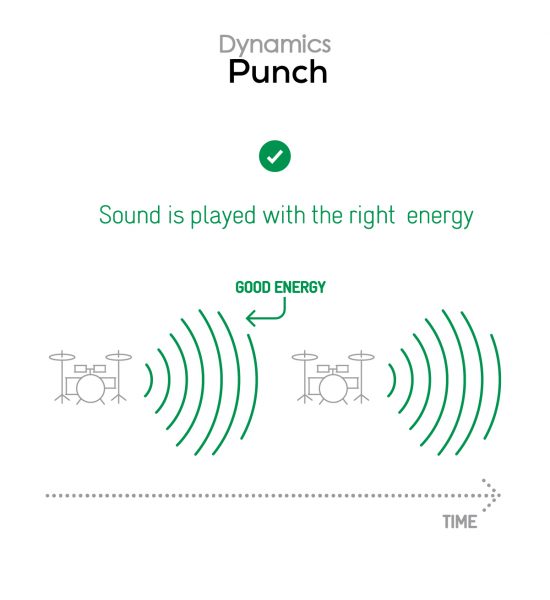
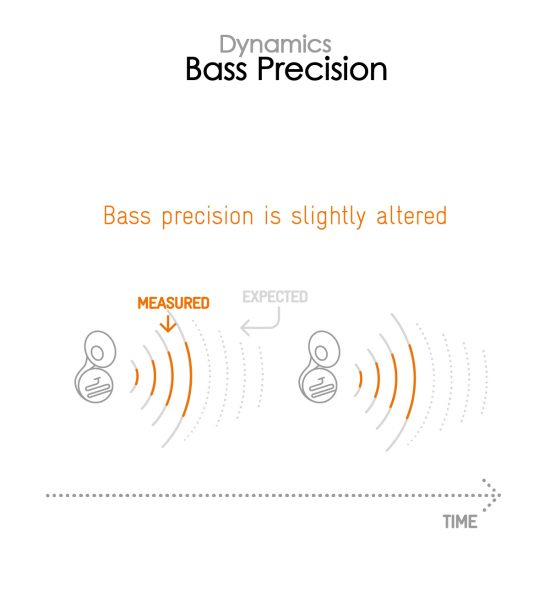

Spatial
Samsung Galaxy A54 5G
162
The sub-attributes for spatial tests include pinpointing a specific sound's location, its positional balance, distance, and wideness.
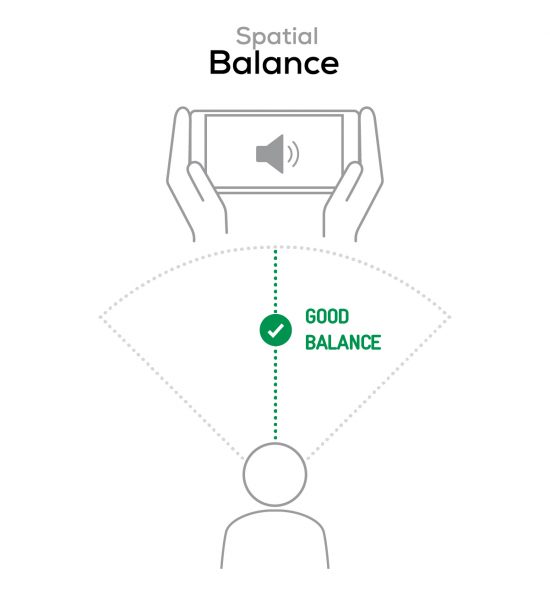
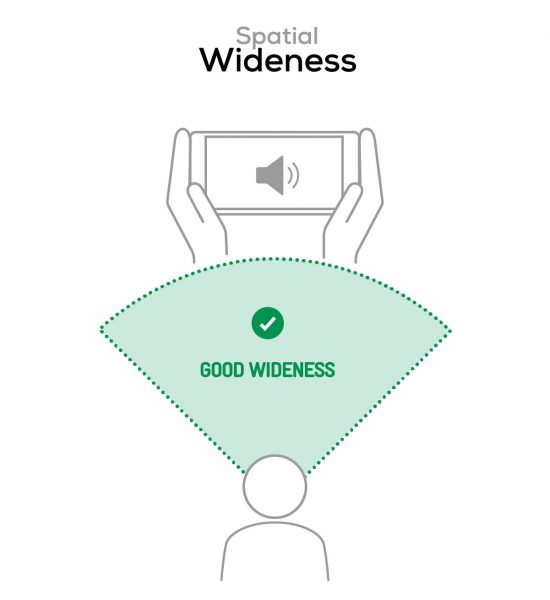

Volume
Samsung Galaxy A54 5G
162
The Volume score represents the overall loudness of a smartphone and how smoothly volume increases and decreases based on user input.
| Hip-Hop | Classical | |
| Samsung Galaxy A54 5G | 75 dBA | 71.3 dBA |
| Google Pixel 7 | 71.8 dBA | 72.9 dBA |
| Xiaomi 12T | 74.8 dBA | 69.4 dBA |

Artifacts
Samsung Galaxy A54 5G
157
The Artifacts score measures the extent to which the sound is affected by various types of distortion. The higher the score, the less the disturbances in the sound are noticeable. Distortion can occur because of sound processing in the device and because of the quality of the speakers.
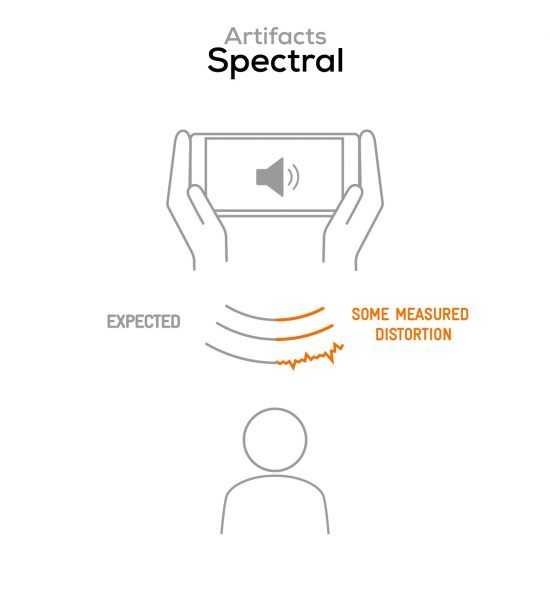

It represents the distortion and noise of the device playing our test signal (0 dB Fs, Sweep Sine in an anechoic box at 40 cm) at the device's maximum volume.
Recording
Samsung Galaxy A54 5G
160
DXOMARK engineers test recording by evaluating the recorded files on reference audio equipment. Those recordings are done in our labs and in real-life conditions, using default apps and settings.
As a recording device, the Galaxy A54 5G did well across all use cases. Timbre was well-balanced when recording with the main camera, which recorded voice-based content with good intelligibility, thanks to a natural and clean midrange. Tonal balance remained consistent with the front camera while in the memo app, more emphasis was put on the upper midrange. Recording dynamics were good overall, thanks to a fairly good signal-to-noise ratio in urban scenarios, even though background could be quite intrusive. Envelope was accurate, with sharp attack in most use cases.
Main camera recordings offered a large and immersive audio scene rendition and precise localizability. However, with the front camera and in the memo app, the sound stage rendition was quite narrow, and audio sources were more difficult to pinpoint precisely. On the plus side, distance rendition was realistic. The device offered good recording loudness across all use cases and was almost free of unwanted audio artifacts. Our experts only noticed some slight distortion when recording louder sources, such as shouting voices. Background rendition was realistic with the main camera but slightly boomy with a more intrusive bass when recording with the front camera.
Here is how the Samsung Galaxy A54 5G performs in recording use cases compared to its competitors:

Timbre
Samsung Galaxy A54 5G
147
The Timbre score represents how well a phone captures sounds across the audible tonal range and takes into account bass, midrange, treble, and tonal balance. It is the most important attribute for recording.

Dynamics
Samsung Galaxy A54 5G
146
The Dynamics score measures the accuracy of changes in the energy level of sound sources, for example how precisely a voice's plosives (the p's, t's and k's, for example) are reproduced. The score also considers the Signal-to-Noise Ratio (SNR), for example how loud the main voice is compared to the background noise.
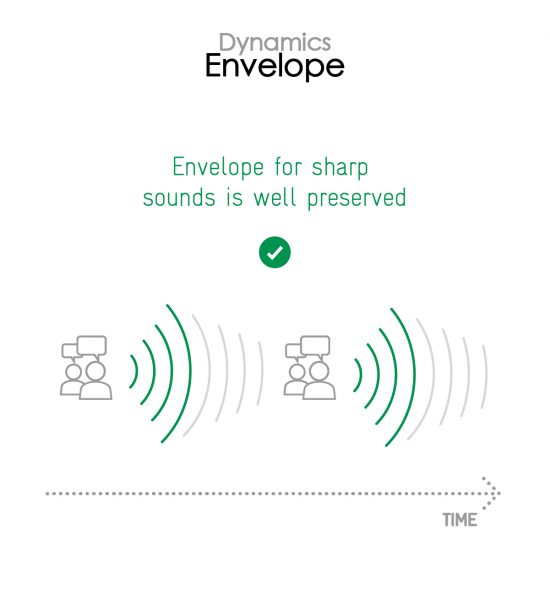
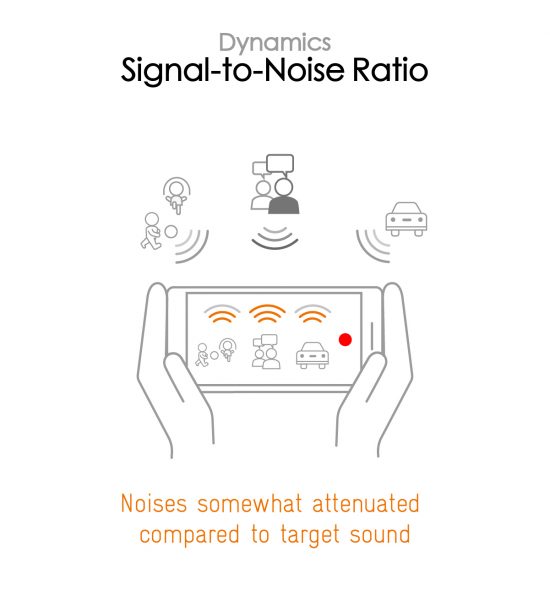

Spatial
Samsung Galaxy A54 5G
159
The sub-attributes for spatial tests include pinpointing a specific sound's location, its positional balance, distance, and wideness on the recorded audio files.
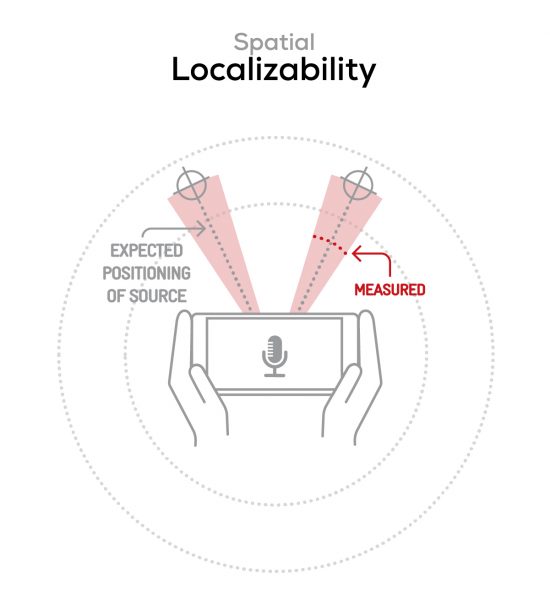
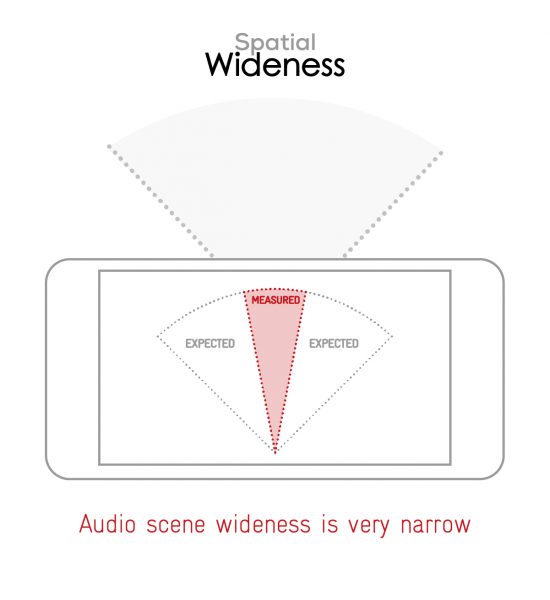

Volume
Samsung Galaxy A54 5G
170
The Volume score represents how loud audio is normalized on the recorded files and the how the device handles loud environments, such as electronic concerts, when recording.
| Meeting | Life Video | Selfie Video | Memo | |
| Samsung Galaxy A54 5G | -25.8 LUFS | -22.2 LUFS | -20.9 LUFS | -21.1 LUFS |
| Google Pixel 7 | -29.4 LUFS | -19.4 LUFS | -17 LUFS | -23 LUFS |
| Xiaomi 12T | -27.9 LUFS | -21.3 LUFS | -19.5 LUFS | -21.4 LUFS |

Artifacts
Samsung Galaxy A54 5G
145
The Artifacts score measures the extent to which the recorded sounds are affected by various types of distortions. The higher the score, the less the disturbances in the sound are noticeable. Distortions can occur because of sound processing in the device and the quality of the microphones, as well as user handling, such as how the phone is held.
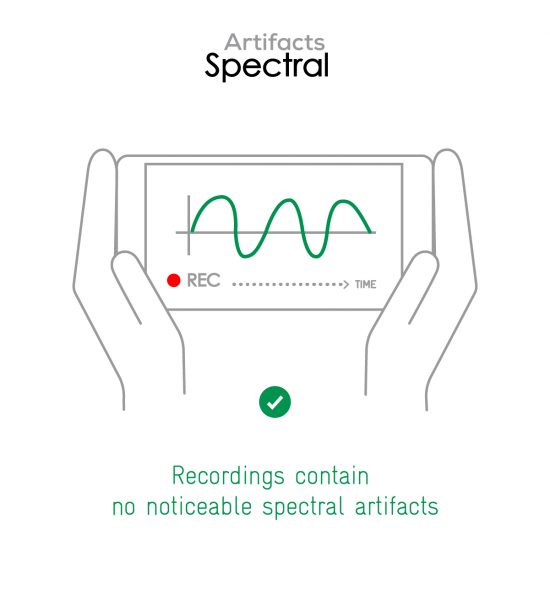
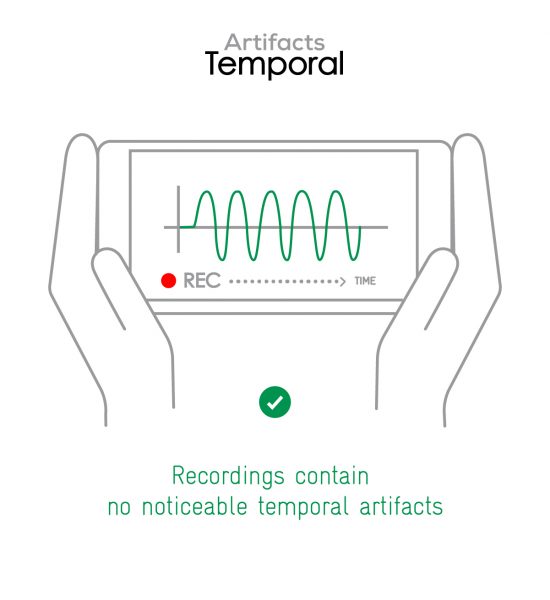
In this audio comparison, you can listen to the way this smartphone handles wind noise relative to its competitors:

Background
Samsung Galaxy A54 5G
166
Background evaluates how natural the various sounds around a voice blend into the video recording file. For example, when recording a speech at an event, the background should not interfere with the main voice, yet it should provide some context of the surroundings.

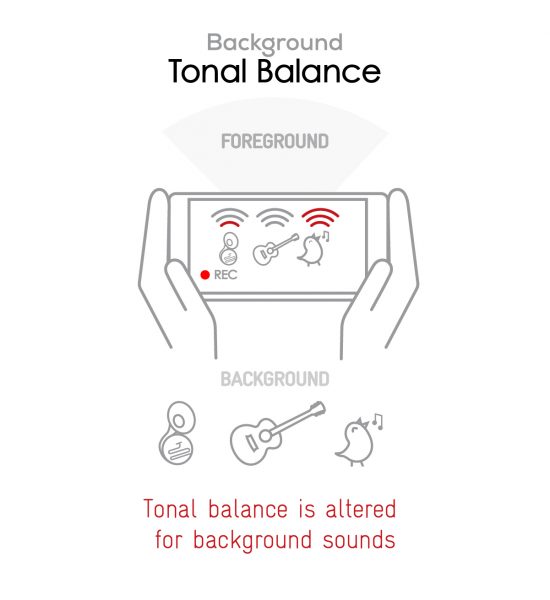


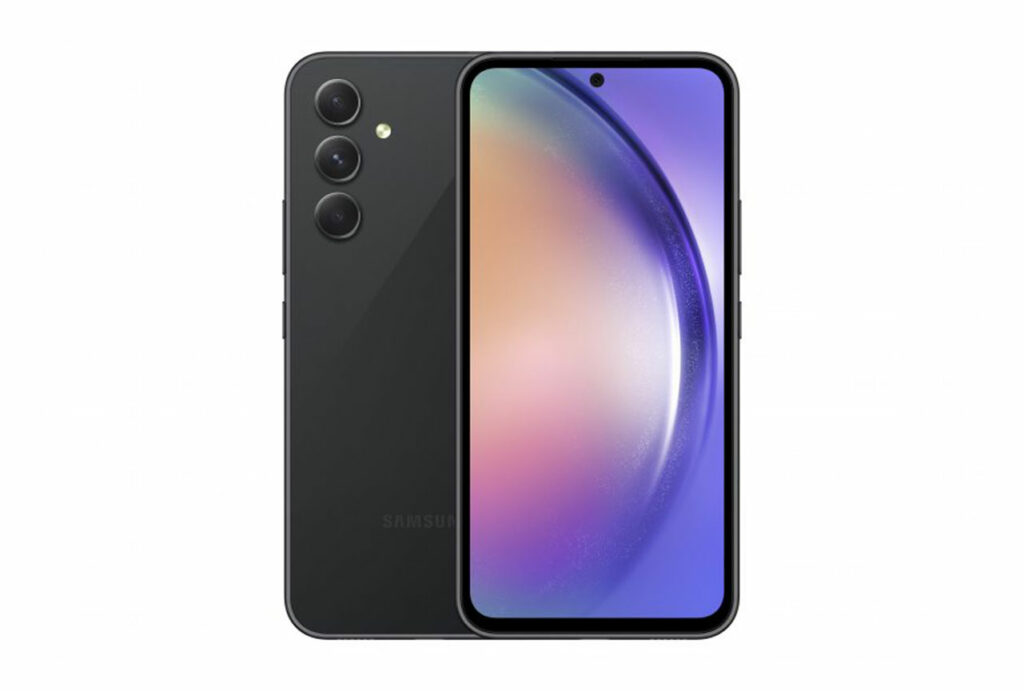
DXOMARK encourages its readers to share comments on the articles. To read or post comments, Disqus cookies are required. Change your Cookies Preferences and read more about our Comment Policy.